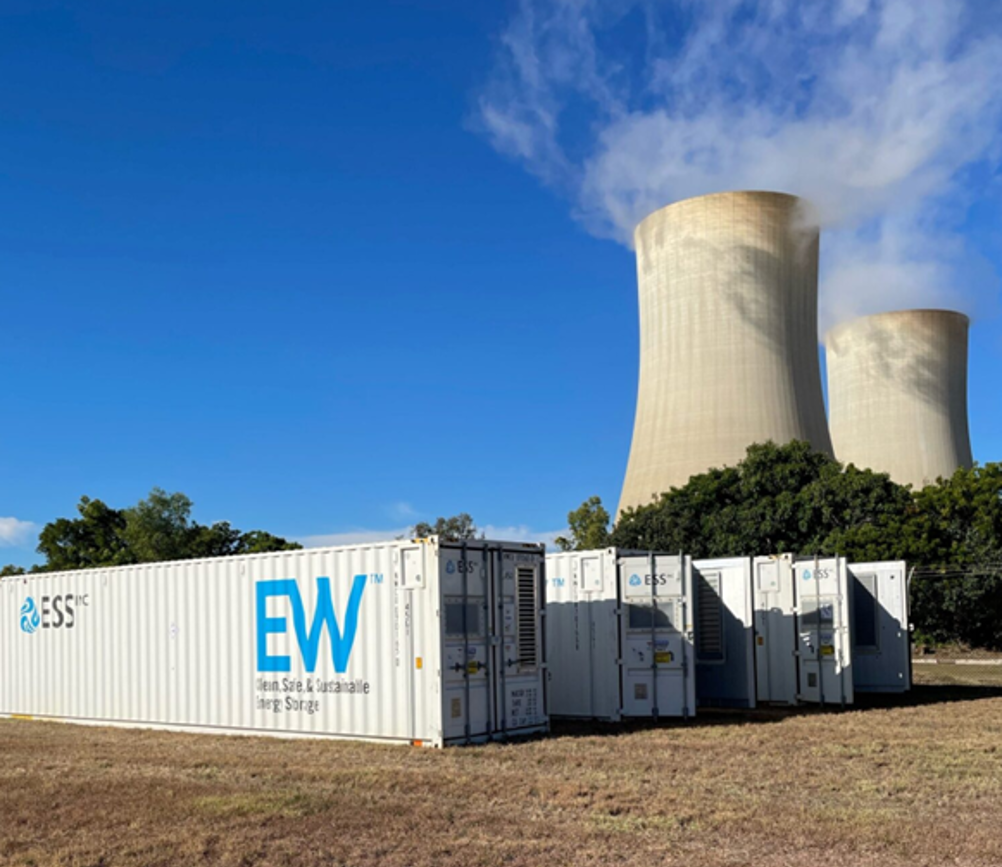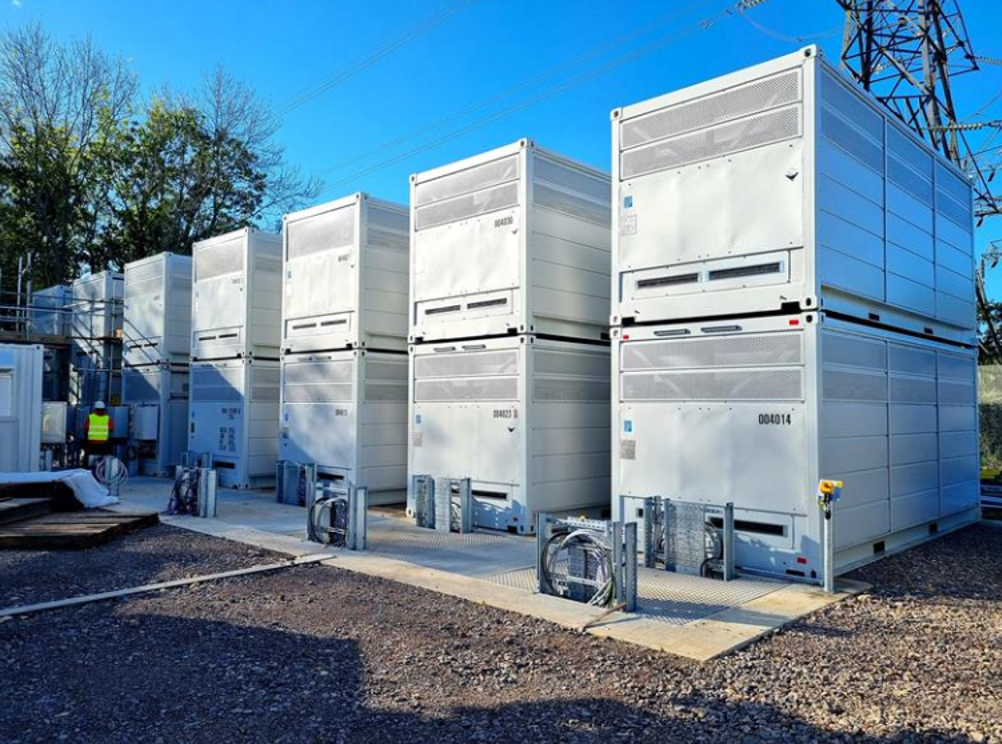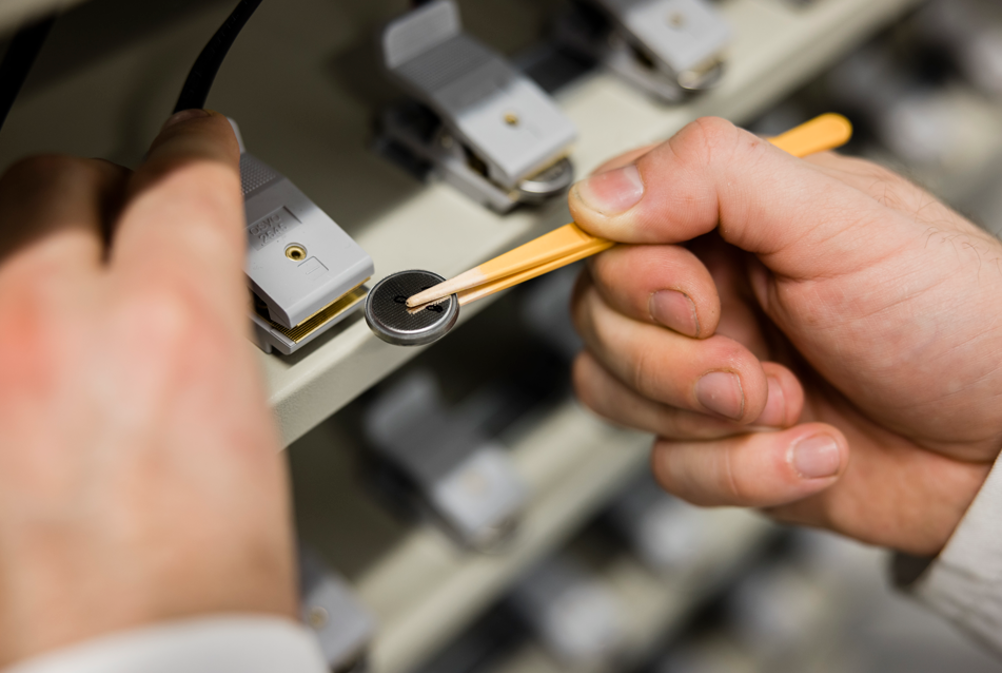Decarbonising Britain’s electricity grid by 2030 is a central plank of the new government’s energy policy, as well as a key milestone on the long and arduous path to net zero. In the short time since entering Downing Street, Labour has made significant moves around onshore wind and solar, along with the massive expansion of offshore wind via the latest CfD auction. All of these are vital for a cleaner grid, but rapid growth of renewables in isolation will not be sufficient.
As more and more clean energy assets are deployed, the ability to store their intermittent output becomes increasingly vital. The International Energy Agency (IEA) estimates that to support COP28 pledges to triple worldwide renewable energy capacity to 11TW by 2030, energy storage will need to increase sixfold. Perhaps even more importantly, the type of energy storage that we add to the grid also needs to evolve.
“Today, most grid-scale energy storage projects have durations of 2-4 hours,” said Alan Greenshields, EMEA director at ESS. “However, 2-4 hours is not adequate to meet the needs of a fully renewable grid.”
Founded in 2011, ESS manufacturers iron flow batteries (IFBs) for long duration energy storage (LDES). Flow batteries are designed to handle deep, daily charge and discharge cycles over multiple decades with minimal degradation - something that lithium-ion chemistry is not well suited to. Rather than the 2-4 hour gaps largely filled by li-ion batteries today, LDES flow batteries are targeting durations of 6-12 hours, operating in a near-constant state of charge or discharge.
“These new LDES technologies rely on non-lithium battery chemistries and have the ability to safely store excess renewable energy during periods of peak generation, providing it back to the grid during periods of peak demand,” said Greenshields. “IFBs differ significantly from lithium-ion batteries…using a water-based, non-toxic electrolyte composed of iron, salt, and water. Unlike lithium-ion batteries, which degrade over time, IFBs maintain their capacity over tens of thousands of cycles without degradation.”
Flow batteries provide just a fraction of the energy density of li-ion and are unlikely to ever play a role in mobility as a result. However, a combination of extended lifecycle, cheaper and abundant materials and enhanced safety makes them a prime candidate for the rapidly expanding stationary storage market.
One of the largest players in the flow battery space, ESS announced plans in August 2024 to triple its production following a $50m investment from the Export-Import Bank of the United States. The company also recently signed a deal with Nigerian energy company Sapele Power – one of the first LDES deals in sub-Saharan Africa – as well as a landmark agreement with Amsterdam’s Schiphol Airport to help decarbonise ground operations.

“At Amsterdam Airport Schiphol, iron flow technology is set to be used in a pilot project as part of the airport’s plan to electrify its ground operations by phasing out diesel ground power units in favour of cleaner electric units,” said Greenshields. “This transition will help the airport to reduce carbon emissions and air pollution, contributing to Schiphol’s goal of becoming a zero-emission airport by 2030.”
ESS’s IFB technology is making promising inroads in energy markets around the world, but it is by no means the only game in town when it comes to flow batteries. Just a few hours’ drive from ESS’s Oregon HQ, Vancouver-based Invinity Energy Systems is offering its own take on the flow battery, with vanadium the key ingredient.
First patented in Australia in the 1980s, vanadium flow batteries (VFBs) have long held promise in the LDES space. One advantage that VFBs have is vanadium’s ability to exist in solution in four different oxidation states, meaning the batteries rely on just a single electroactive element rather than two. According to Matt Harper, Invinity’s co-founder and COO, this comparative simplicity of design is a key differentiator when it comes to longevity and reliability. It’s claimed the company’s batteries can operate for up to 25 years, with virtually no degradation of performance. At end-of-life, the vanadium can even be reclaimed and reused in new VFBs.
“What’s really nice about the vanadium process is that it is relatively simple,” Harper told The Engineer. “The flow loops inside a vanadium flow battery are literally just the positive and negative electrolyte feeding into the cell stacks where the charge and discharge takes place. So that simplicity gives a tremendous advantage in terms of initial capital cost of the system and the complexity of maintaining that system, and sort of the durability and reliability of that system over time.”
Vanadium offers advantages but its relative scarcity raises questions over long term sustainability. Replacing a reliance on lithium, cobalt and nickel for reliance on another rare metal could be considered unwise, but Harper is adamant that the supply chain for VFBs is a vast improvement on lithium batteries, with the bulk of today’s vanadium coming from waste streams. “It’s worth noting that the vast majority of the world’s (vanadium) electrolyte currently comes from secondary sources,” he said.
These sources include iron ore slag, from which vanadium can be extracted, as well as other metal ores. Although some vanadium is mined directly, most comes from these secondary streams. And there are also new potential sources coming online, including from some unlikely places.
“When we look to the future, the thing that we’re most excited about is…low sulphur, offshore marine fuels,” Harper explained. “All of the oil refineries around the world scrambled to put these sort of desulphurisation loops on their processing plants - what comes out of the oil when you take the sulphur out is vanadium. And so there is a tremendous amount of now spent catalysts that is piling up at these facilities that has a tremendous amount of vanadium in it…it’s a very high concentration of vanadium and there’s a number of projects going on around the world to develop the ability to extract that vanadium from those petrochemical wastes.”
Both ESS and Invinity have packaged their technology as containerised, turnkey solutions that can simply be dropped in to plug and play alongside renewable assets. Invinity’s current VS3 product has been rolled out in a 5MWh configuration at the Energy Superhub Oxford, one of the UK’s largest EV charging hubs. Coupled with li-ion, the VFBs act as the ‘first responder’ at the Superhub, with li-ion called into action for more extreme spikes in energy demand.
Invinity has also just opened a new assembly facility in Scotland, adding to its existing manufacturing footprint in the country. Officially launched in July 2024, the new Motherwell plant will have capacity to deliver around 500MW/h of VFBs each year.

Some of that capacity will likely soon include the company’s next-generation VFB. Currently codenamed ‘Mistral’, the latest iteration has been developed in partnership with wind turbine manufacturer Siemens Gamesa and is set to deliver several advantages over the VS3, including a substantial increase on the existing round-trip efficiency of 68 per cent.
“We’re about 78 per cent today (with Mistral), including all of the losses that are built into the system,” Harper explained. “Our targets are sort of in the mid 80 per cent efficiency range.”
As well as system efficiency, Mistral promises to get much closer to li-ion’s physical footprint for stationary storage. One drawback of flow batteries is their relative bulk compared to their more energy-dense lithium cousins. According to Harper, VS3 installations need around twice the acreage as li-ion – not necessarily a dealbreaker for a stationary battery, but undoubtedly a commercial disadvantage. On the flip side, flow batteries’ inherent safety means they can be stacked, and Harper believes this will allow Mistral to compete with li-ion in terms of capacity per square metre.
“We’re able to do that because one of the advantages of the technology is that it’s fundamentally non-flammable,” he said. “If you look at a lithium-ion array, they’re all usually laid out like little ammunition bunkers. They’ve always got spaces between them so that you can fight fires if they happen to pop up in one of the containers. So we’re definitely putting more boxes on a given piece of land. But in terms of the overall density for the overall amount of land…we’re pretty much bang on what others are doing.”
According to Invinity, the longer lifespan of flow batteries will ultimately enable them to deliver clean energy back to the grid at a much lower levelised cost of storage (LCOS) than lithium-ion. For high throughput applications, it estimates a 25-30 per cent lower lifetime cost per unit of energy stored and discharged. Driving down LCOS is vital for the overall economic case for renewables and delivering the intraday storage that will ultimately enable the widespread decarbonisation of power grids.
“The simplest possible example of that is, how do you take solar and make it baseload?” said Harper. “You take a really good generating profile over the course of about eight hours to charge the battery, and then you turn around, and you discharge it back into the grid for 16 hours. That’s the kind of application that we’re laser-focused on.”
While renewables are capable of covering around 90 per cent of electricity demand during times of peak generation, their intermittency means that Great Britain’s grid is still heavily dependent on gas fired plants for thermal backup. Over the past year, gas contributed nearly 30 per cent of the grid’s power, with renewables around 40 per cent, and nuclear and biomass making up the remainder. To fully decarbonise the grid, that gas generation needs to be displaced, and Harper believes flow batteries are the technology to do it.
“Our target is the large steadily operating combined cycle gas plants that are sort of the bread and butter or a large part of the generation base on a huge amount of the grids around the world,” said Harper.
Flow battery technology is in good shape to capitalise on today’s stationary storage demands. However, for tomorrow’s energy needs, entirely new chemistries are being developed that could completely transform electricity storage for mobility applications as well as stationary grid assets.
Berlin-based Theion is one of the players at the bleeding age of this battery arms race. The startup’s patented sulphur-crystal battery is promising figures that, if delivered, could be genuinely transformative: a tripling of current battery energy density at one-third the cell cost and one-third the CO2 footprint. Theion says those kinds of gains may be a decade away, but scientific team lead Andréa Martin explained the core technology the company is developing to get there.
“Our cathode is shaped with sulphur crystals,” Martin told The Engineer. “Basically a self-standing electrode which has…a very engineered porosity. And within that you have also a very engineered pathway for the electrons to conduct. And that’s very different from what our competitors are doing.”

Until recently, Theion was only producing its technology at lab scale, manufacturing small quantities of coin cells ad hoc. However, a newly opened tech centre on the outskirts of Berlin is enabling the startup to produce much larger pouch cells that can be delivered as samples to customers. Having previously demonstrated energy density of around 250Wh/kg, Theion’s near-term goal is to double this to 500Wh/kg, before pursuing the mythical figure of 1000Wh/kg.
“By 2027, we want to reach the intermediate goal - Generation 1 of our battery -which will present 500Wh/kg, basically more than twice the energy density of state-of-the-art batteries,” said Martin.
Doubling energy density once again to the 1000Wh/kg target will be a mammoth task, one that Theion predicts will take the next 10 years. Gains will come not only from the sulphur crystal cathode, but a proprietary anode chemistry that could deliver improvements of around 30 per cent, as well as a tailored, ‘quasi solid state’ electrolyte. “Combining those three elements - cathode, electrolyte and anode…will allow us to reach this very high energy,” said Martin.
The talk may be big, but the company is still small, with less than 20 employees on the books. As it scales and moves towards commercial production, the air mobility sector is its primary focus, where Theion’s energy density promises to be a point of difference.
Stationary storage is also a target. Theion is aiming for lifecycle longevity around the 1,000 mark, meaning its batteries could displace li-ion grid technology rather than flow batteries with lifecycles in the tens of thousands. The relative abundance of sulphur as a core component should also allow Theion to undercut li-ion on price.
“Lithium sulphur is cheap because sulphur is 10 times cheaper than the NMC (nickel, manganese, cobalt) cathode raw materials,” said Martin. “And if you combine the price of the raw materials, or of your final battery, plus the cycle life… you end up with a very low levelised cost of storage (LCOS). And that’s the biggest or the most important KPI for this kind of thing.”
Whether its flow batteries or new chemistries like crystal sulphur, LCOS will play a vital role in determining the shape of our future grid. Driving down the cost of storage – particularly high-throughput intraday storage – is the key to supporting decarbonised electricity, displacing the gas-fired plants that global grids still rely on so much today.
“Those plants are generating 24 hours a day, and it’s something like 80 to 90 US dollars a megawatt hour,” explained Invinty’s Harper. “If you want to take solar at $20 to $30 a megawatt hour and use it to displace other sources, that means you have to have a battery that can absorb that energy and then dispatch it back to the grid at $50 a megawatt hour or less. That’s the number that we are absolutely focused on. And we think we can get there.”












Emergency law passed to protect UK steelmaking
<b>(:-))</b> Gareth Stace as director general of trade body UK Steel, is obviously an expert on blast furnace technology & operation. Gareth...